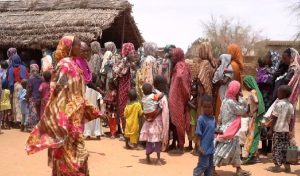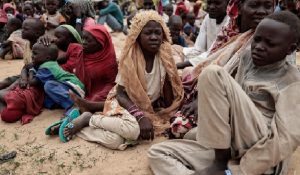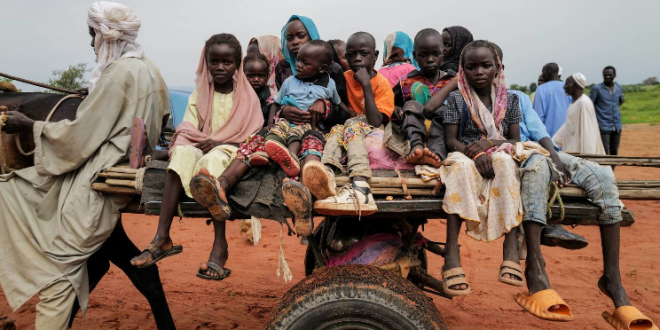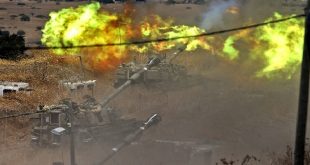14-04-2024
KHARTOUM: The woman with sad eyes and a quiet voice is just one of the millions of people living in camps for those forced to flee their homes in Sudan, where a civil war broke out a year ago between the army and an armed paramilitary group. The country now faces what the UN says is the “world worst hunger crisis”.
Qisma Abdirahman Ali Abubaker goes through the motions of waiting in line to pick up her food ration, but her heart is not in it.
 The small bag does not have to stretch as far as it used to for her family.
The small bag does not have to stretch as far as it used to for her family.
Three of her children have died of disease and malnutrition in the past four months, she says. The oldest was three, another was two years old and last was a six-month-old baby.
Abubaker has taken refuge at Zamzam Camp for displaced people in Northern Darfur, part of a region in the west of the country, amid warnings of a catastrophic nutrition crisis there.
It is the oldest and largest such camp in the country, but there is fresh desperation and grief as Sudan’s war grinds into its second year.
The medical charity Medecins Sans Frontiers (MSF) says it found in January that at least one child in the camp dies every two hours. With little food, clean water or healthcare, illnesses that could once be treated now kill.
MSF is one of the last international humanitarian agencies still on the ground in Darfur.
It has just completed a mass screening of vulnerable women and children in Zamzam and shared the results with the media.
The agency found that three out of every 10 children under five were acutely malnourished, as well as a third of pregnant and breastfeeding mothers, confirming fears of a “catastrophe” that an earlier survey had suggested.
This is double the threshold for a nutrition emergency, and probably just the tip of the iceberg of Sudan’s hunger crisis, says Abdalla Hussein, MSF operations manager for Sudan.
 “We have not reached all the children in Darfur, not even in North Darfur, we’re talking about only one camp,” he told me at the MSF regional headquarters in Kenya’s capital, Nairobi.
“We have not reached all the children in Darfur, not even in North Darfur, we’re talking about only one camp,” he told me at the MSF regional headquarters in Kenya’s capital, Nairobi.
Access to Darfur is extremely difficult for foreign journalists as well as aid agencies, but we worked with a local cameraman, and Abubaker told him her story.
She could not afford to take her children to hospital or buy medicine.
“My first child died on the way home from the pharmacy, and the second child died after six days due to malnutrition,” she says.
The baby fell sick and died three days later.
Abubaker’s family are smallholder farmers like many in Darfur. They have struggled to grow enough food, and the violence and insecurity of the war has severely disrupted farming.
“People are sick and hungry,” she tells media. “The displaced people are jobless and the only people who have money are (government) employees. Ninety per cent of the people are sick.”
Zamzam was already fragile, formed by those caught up in ethnic violence 20 years ago, and almost entirely dependent on humanitarian aid but the food supplies stopped with the war. Most aid agencies evacuated as the paramilitary Rapid Support Forces (RSF) took over large swathes of the region.
Fighters for the RSF and its allied militias are accused of looting hospitals and stores, something which the RSF has consistently denied.
Getting new supplies transferred across conflict lines has proved almost impossible. Aid workers say the Sudanese military authorities are too slow to issue visas and internal travel permits. (Int’l Monitoring Desk)
 Pressmediaofindia
Pressmediaofindia




